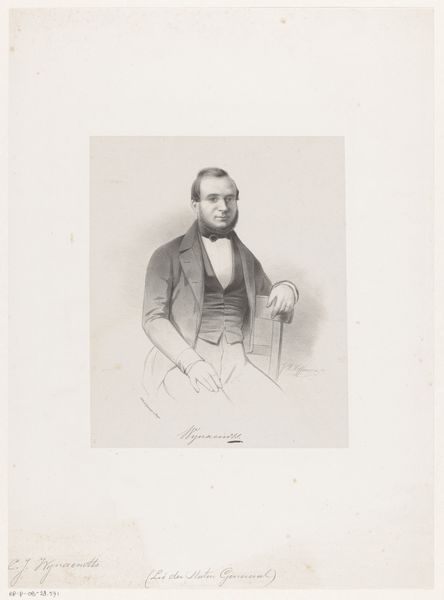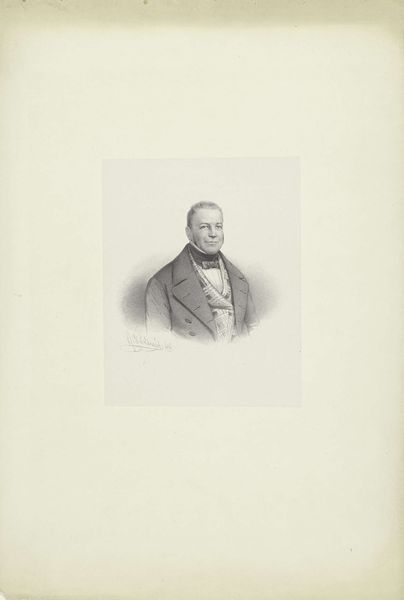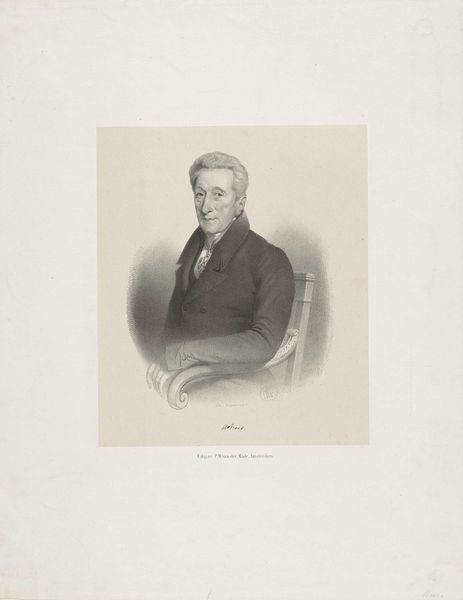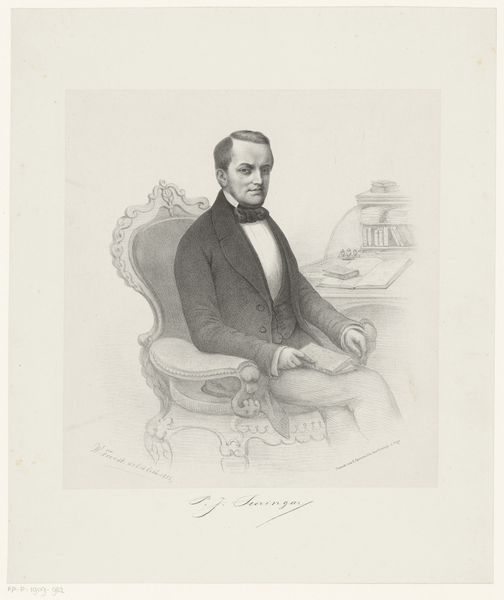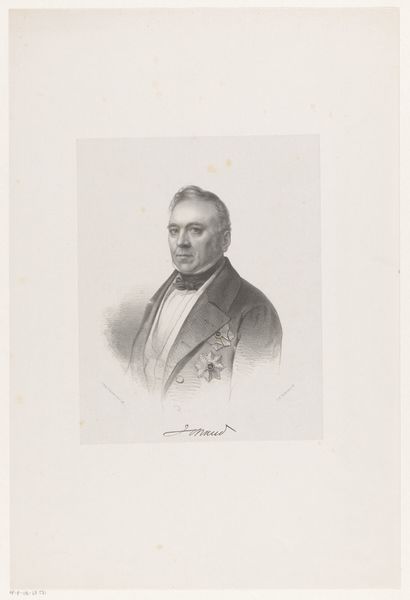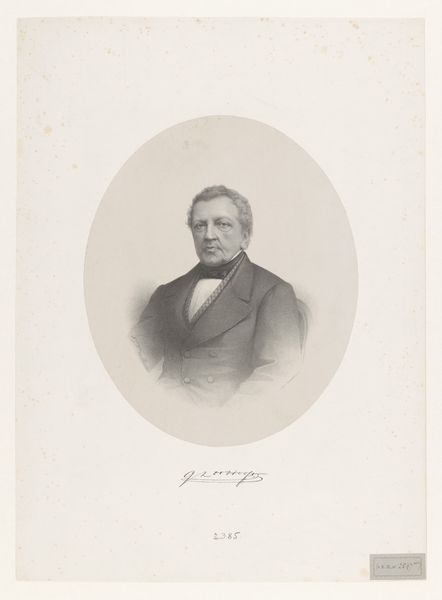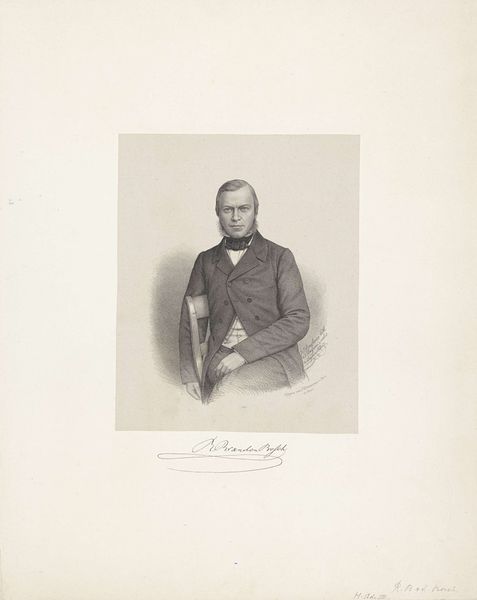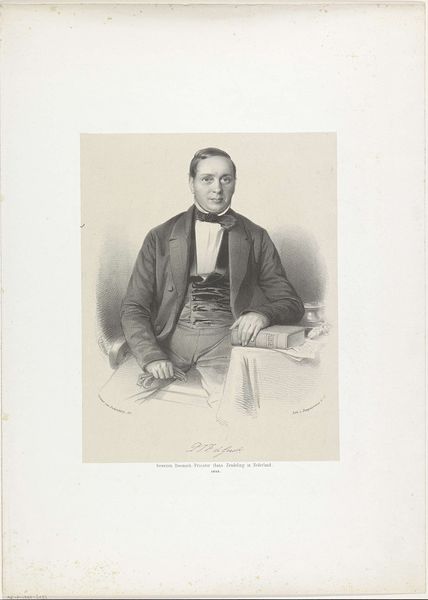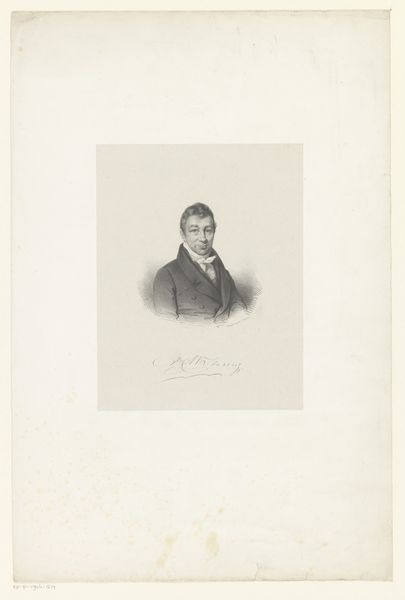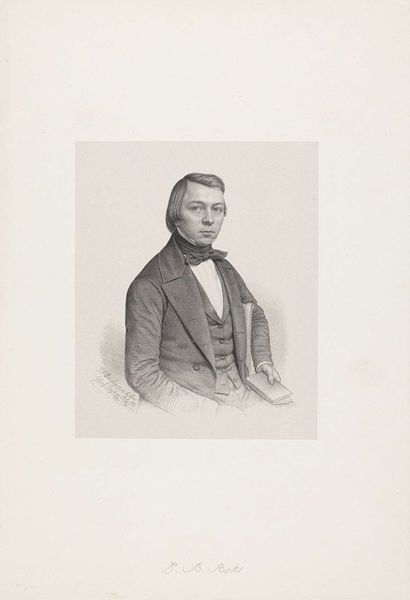
drawing, pencil
#
portrait
#
pencil drawn
#
drawing
#
pencil sketch
#
pencil drawing
#
pencil
#
portrait drawing
#
realism
Dimensions: height 425 mm, width 320 mm, height 440 mm, width 365 mm
Copyright: Rijks Museum: Open Domain
Curator: Here we have a lithograph from 1860 by Willem Bernardus IJzerdraat. It is titled "Portret van H. Stolk." Editor: It projects an air of self-assurance, almost of challenge, doesn’t it? A serious, somber mood seems to radiate from this man, from the set of his jaw to the almost severe detailing of his garments. Curator: Notice how the oval shape of the portrait focuses attention sharply on the subject’s face. IJzerdraat uses incredibly fine hatching and cross-hatching to model the forms, particularly the face and hands. This controlled application of line gives the image its clarity. The realism is quite masterful. Editor: Realism in the 19th century, though, wasn't just about mirroring appearances. This work places Stolk squarely in a bourgeois setting. Consider his dress and seated posture—they signify status. Who was Stolk, I wonder? His assured bearing likely speaks to a privileged life. The power dynamics inherent in portraiture itself fascinate me. Curator: The formal elements reinforce this interpretation. The dark coat and the ornate chair, delineated with meticulous detail, frame Stolk, providing visual cues that signal stability and a sense of belonging. See how the chair's curves contrast with the rigid lines of his suit, offering a subtle, yet important tension. Editor: But is it a tension that truly subverts the power structure, or one that simply decorates it? Perhaps his slightly asymmetrical gaze disrupts the otherwise polished veneer. Still, this "realism" appears curated. Where's the dirt, the wear? We observe an ideal of masculine respectability, I suspect. Curator: Precisely. It is less about exposing flaws than reinforcing established ideals of comportment and presentation. Editor: By analyzing its details and context, we come to comprehend this drawing less as a mere image, and more as a calculated pronouncement of social standing. A reminder that how one presents themselves visually is as crucial as social reality itself. Curator: A powerful reminder. This piece stands as an exemplary artifact of 19th-century bourgeois values precisely because its formal elements underscore, rather than undermine, the social narrative. Editor: Indeed. A carefully constructed portrait of a man carefully constructing his public identity.
Comments
No comments
Be the first to comment and join the conversation on the ultimate creative platform.

